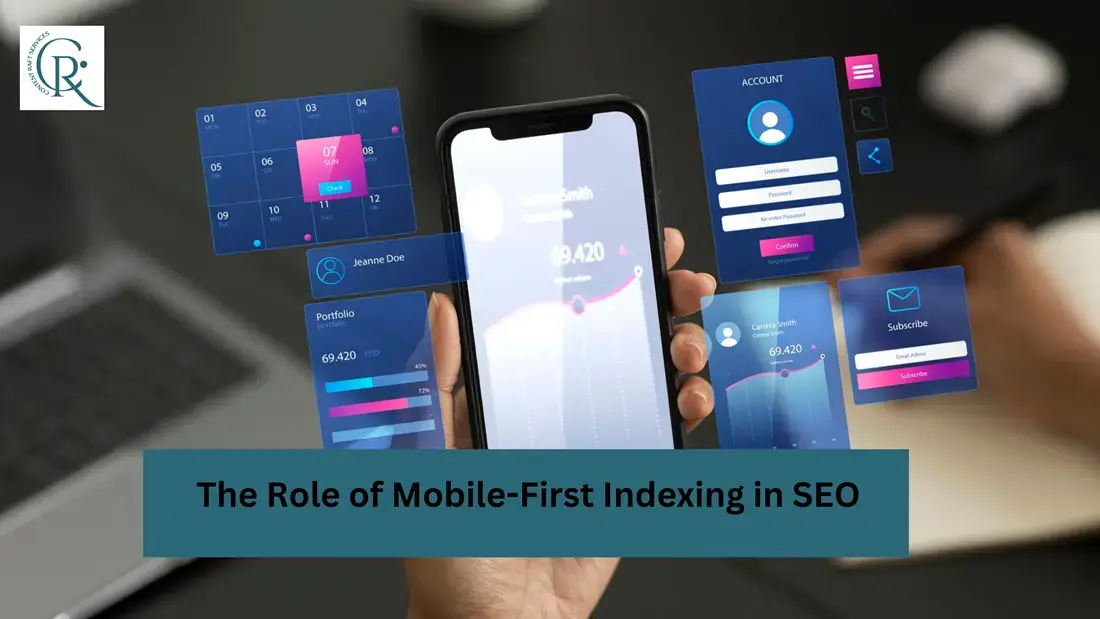
Understanding Mobile-First Indexing
Mobile-first indexing is a pivotal SEO strategy where Google primarily considers the mobile version of a website for indexing and ranking. This shift signifies that Google’s search algorithms prioritize mobile-friendly websites when determining search rankings, making mobile optimization a fundamental aspect of SEO.
How Mobile-First Indexing Works
- Mobile Version as the Primary Source: Google’s crawlers analyze and index the mobile version of a site rather than the desktop version.
- Impact on Rankings: Websites optimized for mobile devices are more likely to rank higher in search results.
- Evolution of Google’s Indexing Approach: Initially, Google crawled both desktop and mobile versions, but now mobile content is given priority.
Importance of Mobile-First Indexing for SEO
1. Mobile Usage Dominance
With the majority of internet users accessing content via mobile devices, a mobile-optimized website is essential for maintaining visibility in search results.
2. Enhanced User Experience
Mobile-first indexing ensures that users have a seamless experience, leading to higher engagement, lower bounce rates, and improved conversions.
3. Improved Search Engine Rankings
By prioritizing mobile-friendly websites, Google ensures that content is relevant and accessible to the majority of users.
4. Avoiding Duplicate Content Issues
Having a single mobile-optimized site prevents issues that arise from maintaining separate desktop and mobile versions.
5. Faster Page Loading Speeds
Mobile-optimized pages load faster, improving user experience and boosting search rankings.
A professional SEO agency in the UAE can help your business stay ahead with mobile-first strategies, ensuring a responsive website, faster load times, and better search rankings. Contact us today to optimize your site for success!
Best Practices for Mobile-First Indexing
1. Implement Responsive Design
Ensure your website adapts to different screen sizes seamlessly, enhancing usability and navigation.
2. Optimize Mobile Content
Make sure text is readable without zooming, and navigation is simple and intuitive for mobile users.
3. Optimize Images and Media
Compress images and optimize videos to enhance loading speed without sacrificing quality.
4. Use Google’s Mobile-Friendly Test
This tool helps assess your site’s mobile compatibility and provides recommendations for improvement.
5. Ensure Content Consistency
Metadata, structured data, and core content should be identical on both mobile and desktop versions to maintain search equity.
6. Prioritize Page Speed Optimization
Since mobile users often have slower internet connections, reducing unnecessary scripts and leveraging caching can significantly boost performance.
7. Verify Structured Data Implementation
Ensure your structured data is properly configured to enhance search engine understanding and ranking potential.
8. Use Consistent URLs
Avoid using different URLs for desktop and mobile versions to prevent indexing and ranking issues.
Assessing Mobile-Friendliness for SEO
- Run a Site Audit: Utilize tools like Semrush or Google’s Site Audit to identify indexing issues.
- Use Google PageSpeed Insights: Analyze and improve your website’s loading speed for mobile devices.
- Monitor Crawlability and Indexability: Ensure your site is properly accessible to search engine crawlers by checking structured data and avoiding blocked resources.
- Fix Image and Media Issues: Implement lazy-loading techniques and provide sitemaps for better indexing.
Conclusion
Mobile-first indexing is a game-changer in the world of SEO. As mobile usage continues to rise, optimizing websites for mobile devices is no longer optional—it’s a necessity. Businesses and webmasters must ensure that their sites are mobile-friendly to enhance user experience, improve rankings, and stay competitive in search results. By following best practices, performing regular audits, and utilizing optimization tools, websites can effectively adapt to Google’s mobile-first approach and achieve long-term SEO success.
FAQs
Why is mobile-first indexing important?
Mobile-first indexing means Google primarily uses the mobile version of a website for ranking and indexing. Since most users browse on mobile devices, it ensures sites are optimized for the best user experience, faster loading, and better rankings.
Why is mobile optimization important in SEO?
Mobile optimization enhances user experience, reduces bounce rates, improves site speed, and ensures better search rankings. Google prioritizes mobile-friendly websites, making it essential for SEO success.
How do you approach SEO for mobile devices and optimize for mobile-first indexing?
- Use a responsive design to ensure content adapts to different screen sizes.
- Optimize page speed by compressing images and minimizing scripts.
- Ensure content parity between mobile and desktop versions.
- Improve mobile UX, including navigation and readability.
- Use structured data and optimize for local SEO.
- Test mobile-friendliness using Google’s Mobile-Friendly Test.
What is mobile index?
A mobile index refers to how search engines, especially Google, index and rank websites based on their mobile versions instead of desktop versions.
How to check mobile-first indexing?
- Use Google Search Console → “Settings” → Check “Indexing Crawler” (Googlebot Smartphone).
- Check your crawl stats to see if mobile crawling is predominant.
- Use Google’s Mobile-Friendly Test to see how Google views your site.
What is mobile-first optimization?
Mobile-first optimization means designing and optimizing a website primarily for mobile users. It involves responsive design, fast loading times, easy navigation, and ensuring mobile content is SEO-friendly.
Why mobile-first approach?
With over 60% of web traffic coming from mobile devices, a mobile-first approach ensures a seamless user experience, better engagement, and improved search engine rankings.
What is mobile optimization in digital marketing?
Mobile optimization in digital marketing involves ensuring that websites, ads, and content are tailored for mobile users. It includes responsive design, fast-loading pages, AMP (Accelerated Mobile Pages), and mobile-friendly UX to enhance conversions.
What is a mobile-first strategy?
A mobile-first strategy prioritizes designing and optimizing digital experiences for mobile devices before desktops. It focuses on speed, usability, and SEO to improve engagement and rankings
